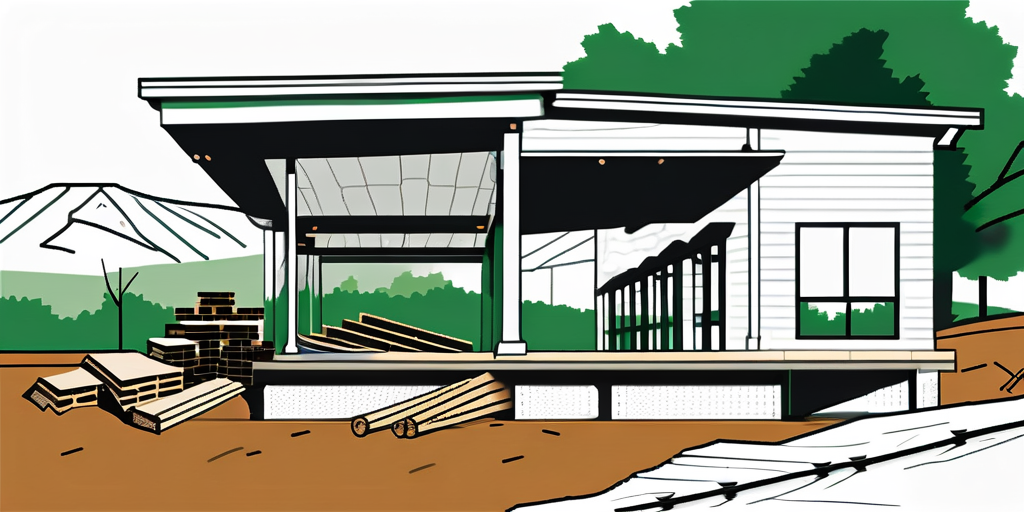
The construction of homes and commercial buildings at Tennessee National requires a combination of skilled labor and the right tools. Understanding the essential tools involved in various stages of the building process can empower builders and contractors, ensuring projects are completed efficiently and to the highest standards. This article will guide you through the critical tools needed throughout the different phases of construction, making your building journey at Tennessee National a success.
Building at Tennessee National involves a well-defined process that typically encompasses several key phases, from initial planning to final inspection. Recognizing these stages can help you determine which tools are necessary at each step, allowing for a more streamlined construction experience.

During the planning phase, establishing a comprehensive timeline and budget is essential. This is where careful consideration of available tools can significantly impact the overall efficiency of the building project. The right planning tools can reduce timelines and avoid costly overruns. Furthermore, engaging with local contractors and suppliers during this phase can provide valuable insights into the best practices and materials suited for the specific climate and terrain of Tennessee National.
Planning plays a pivotal role in any construction project. It involves identifying objectives, outlining resources, and developing strategies to achieve the desired outcomes. In Tennessee National, understanding the local regulations and building codes is crucial, as this ensures that all necessary permits are obtained before work commences. Moreover, effective planning includes risk assessment, where potential challenges such as weather conditions or supply chain disruptions are anticipated, allowing for contingency plans to be put in place.
Additionally, modern project management software can assist in accurate scheduling and resource management, offering a digital space to visualize the entire construction process. These tools foster collaboration between team members, reducing the risk of miscommunication and contributing to a smoother workflow. Integrating communication platforms can also enhance transparency among stakeholders, ensuring that everyone is aligned with the project's goals and timelines.
Each stage of the building process requires specific tools that cater to the needs of that phase. By understanding these stages, builders can ensure they have the right equipment ready to go, allowing them to tackle challenges as they arise efficiently. For instance, during the foundation work, precision tools such as laser levels and concrete mixers are crucial for ensuring stability and durability. Similarly, during the roofing phase, safety equipment and high-quality materials are essential to protect the structure from the elements and ensure longevity.
Moreover, the exterior finishing stage is not just about aesthetics; it also involves selecting materials that are energy-efficient and environmentally friendly. This consideration is particularly important in Tennessee National, where sustainability is a growing priority among homeowners. Incorporating energy-efficient windows, insulation, and siding can significantly reduce energy costs in the long run, making the building not only visually appealing but also economically viable. As the project progresses toward final inspections, thorough checklists and quality assurance protocols become indispensable, ensuring that every detail meets the high standards expected in this community.
Site preparation is often considered the foundation of any successful building project. This initial step entails clearing the site, grading the land, and ensuring it is ready for construction activities to commence. Employing the right tools during this phase can significantly impact the efficiency of subsequent work.

Site surveying is integral to understanding the geographical landscape where construction will take place. Tools such as theodolites, total stations, and GPS surveying systems help builders assess land features accurately, identify property boundaries, and determine elevation changes.
Accurate measurements obtained from these tools ensure that buildings are constructed in the correct locations and to the proper specifications, minimizing the likelihood of costly errors later in the process. Moreover, modern surveying technology has evolved to include drones equipped with high-resolution cameras and LIDAR systems, which can quickly capture vast areas of land with remarkable precision. This advancement not only enhances the speed of data collection but also provides a comprehensive overview of the terrain, allowing for better planning and decision-making.
Excavation and grading tools are crucial for preparing the site for foundation work. Heavy machinery such as excavators and bulldozers make this process much more efficient compared to manual labor.
A well-equipped site must also include hand tools like shovels, picks, and rakes for finer adjustments and detailing. These tools work hand-in-hand with larger machinery, ensuring the site is properly leveled and ready for the next stage of construction. Additionally, compactors and rollers play a vital role in ensuring that the ground is solid and stable, which is essential for supporting the weight of the building. Proper compaction prevents future settling issues that could lead to structural problems, making it a critical step in the site preparation process. Furthermore, the use of erosion control tools, such as silt fences and sediment basins, helps protect the surrounding environment during excavation, ensuring compliance with environmental regulations and promoting sustainable building practices.
The foundation is one of the most critical aspects of any building. It provides the necessary support and stability for the structure above. Using high-quality tools designed for foundation work is essential to ensure safety and durability.
Concrete is the most commonly used material for foundations in Tennessee National. Thus, having the right concrete mixing and pouring tools is imperative. A concrete mixer can prepare large batches of concrete, facilitating quick and efficient pours.
Additionally, tools such as vibrators are essential for eliminating air bubbles during the concrete pouring process, ensuring a solid, durable foundation that will stand the test of time. Moreover, using a concrete pump can significantly enhance the pouring process, especially for larger projects where the foundation is deep or requires precise placement of the concrete. This equipment allows for the concrete to be delivered directly to the desired location, minimizing labor and maximizing efficiency.
Once the concrete has cured, framing tools come into play. Tools like nail guns, framing squares, and levels are essential for creating the framework that supports the structure above. Accurate framing ensures that walls are plumb and levels are correct.
Having the right tools at this stage is crucial to prevent any structural issues that could arise later, maintaining the integrity and longevity of the building. In addition to these tools, the use of laser levels can provide even greater precision, allowing builders to ensure that every aspect of the framework is perfectly aligned. Furthermore, incorporating adjustable framing jigs can streamline the process, making it easier to replicate measurements and angles, which is especially beneficial in larger projects where consistency is key. These tools not only enhance accuracy but also improve the overall workflow, making the construction process smoother and more efficient.
After the foundation is laid, it’s time to focus on framing and structural work. This phase involves assembling the skeletal structure of the building, so the right tools are vital for both efficiency and safety.

Traditional woodworking tools, such as saws, hammers, and chisels, are essential for creating the wooden framework of a building. Power tools, including circular saws and nail guns, can greatly increase the speed and accuracy of the work.
It's also important to invest in personal safety equipment, such as gloves and goggles, to ensure the well-being of everyone on-site during this phase. Additionally, the use of a sturdy workbench can enhance precision when cutting and assembling pieces, while clamps can secure materials in place, preventing any unwanted movement during the construction process.
In addition to woodworking, metalworking tools are often needed for structural integrity. Tools such as metal saws, welders, and rivet guns are critical for projects that require steel or other metal components.
The combination of wood and metal tools can create a strong, durable structure that meets modern building standards and can withstand the elements in Tennessee National. Furthermore, understanding the properties of different metals, such as aluminum and steel, can influence the choice of tools and techniques used, ensuring that the right materials are selected for the specific demands of the project. This knowledge not only enhances the structural integrity but also contributes to the longevity and sustainability of the building, making it a wise investment for future generations.
The final stages of the building process include roofing and exterior finishing. These are essential for not only aesthetic appeal but also proper insulation and protection from the weather.
Depending on the roofing material chosen—be it shingles, metal, or tiles—a variety of roofing tools will be required. For example, roofing nailers and shears can make the installation process rapid and efficient. Each type of material has its own set of requirements; for instance, metal roofing may require specialized tools like metal cutters and seamers to ensure a tight fit and durability against harsh weather conditions.
Additionally, safety equipment such as harnesses and scaffolding should be utilized to ensure the safety of workers as they navigate heights during the roofing process. Investing in high-quality safety gear is crucial, as it not only protects workers but also enhances productivity by allowing them to focus on their tasks without the constant worry of potential accidents.
Exterior finishing tools, such as paint sprayers, caulking guns, and siding tools, play an essential role in achieving the desired look for the building. A finishing touch can elevate the overall appearance and increase curb appeal. For instance, using a paint sprayer can provide a smooth and even coat, while caulking guns ensure that gaps and seams are sealed properly, preventing water intrusion and enhancing energy efficiency.
Careful attention to detail at this stage ensures that the building is not only functional but also visually appealing, contributing to the overall charm of the Tennessee National community. Moreover, the choice of colors and textures during the exterior finishing process can reflect the local environment and architectural style, creating a harmonious blend with nature. Techniques such as weatherproofing and the application of protective coatings can further enhance the longevity of the exterior finishes, ensuring that the building remains beautiful and resilient against the elements for years to come.